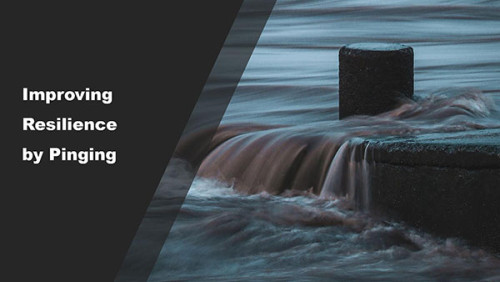Think about the many times when your organization has been under stress. In the utility vegetation management industry, we don’t have to look far. Over the past two years, we have faced a global pandemic, back-to-back active storm seasons, labor shortages, and supply chain interruptions to name a few stressors. When stretched, the goal for all of us is to recover quickly and emerge stronger. One key to success is proactively seeking and paying attention to early warning signals that we are approaching an overload situation or safety boundaries and have a plan to adapt.
What is pinging?
At Lewis, we use the term “pinging” which borrows from the echo location of a submarine but refers to actively sending out our sonar and probing for signals of organizational stress.
A few years ago, when I first joined Lewis, I went out on storm with a seasoned division manager. We were at a large fairgrounds parking lot where Lewis trucks were staged awaiting tickets. What was immediately noticeable was that the Lewis teams, deployed from different regions nationwide, were not talking to one another. Fast forward: we now create structure and practices to build teamwork, collaboration, and engagement when on storm. We are one team with one mission.
During Hurricane Ida, our operations leadership formed a new, cohesive team and assigned field leadership from the diverse teams who mobilized from the responding partner utilities to lead the new team together. This allowed our boots on the ground, some of whom were deployed for weeks, to maintain stronger coordination and a high level of consistency during a situation of extreme variability.
Destressing the frontline
When on storm, our mission is to “destress the frontline.” To accomplish this, our leaders actively ping for signs of fatigue. We conduct teammate-to-teammate peer checks. We do everything within our power to support our teams with a clean place to sleep knowing that a good night’s sleep is critical to keeping our craftworkers safe. We set the pace for safety.
We analyze our storm After-Action Reviews daily for trends and risks. This enables us to figure out where and what type of help is needed in real-time. We are able to increase attention across the team and act to manage areas of high risk.
We ping frontline leaders and crews asking open-ended questions and listening for weak signals.
As risk increases (i.e., as we get closer to safety boundaries), we lower our risk tolerance and increase leadership touch points. We bring in extra safety and logistics support with goals of decreasing the load on the frontlines and bringing in a fresh set of eyes.
Building reciprocity for leadership effectiveness
Reciprocity is when a team is willing to sacrifice their individual goals to help a larger group achieve theirs. We see this clearly with utilities who are willing to provide mutual aid to others facing widescale outages and infrastructure devastation. We also witness it closer to home.
Years ago on storm calls, we would hear stories of heavily loaded operations leaders trying to find rooms on the way to storm or trucks rolling into a hotel parking lot only to discover the rooms had been given away. Sometimes teams would sleep in their trucks. At our corporate office, we embraced our mission during storm is to destress the frontline. We added flexibility and adaptability to our roles to reduce the pressure where we can and we never say, “not my job.”
Codesigning better solutions
Reciprocity is present when teams anticipate another’s needs and offer help without being asked. We are now beginning to experiment more deliberately with corporate and operations spending a “day in the life” together to build knowledge of codependent roles. What’s it like for our general forepersons to work out of their trucks all day long? Conversely, what’s it like to respond to a multitude of varying IT requests all day long? These days are designed to give each team a better idea of what the other does and the challenges they face so they can codesign better solutions and offer each other help.
In closing
Most organizations have unofficial early warning signals of a system under strain but few well-defined strategies for noticing and managing these effectively. The key is to define your organizational pings and have strategies and capacities in place before they are needed.
This article originally appeared in the Jan/Feb 2022 issue of the UAA Newsline.




